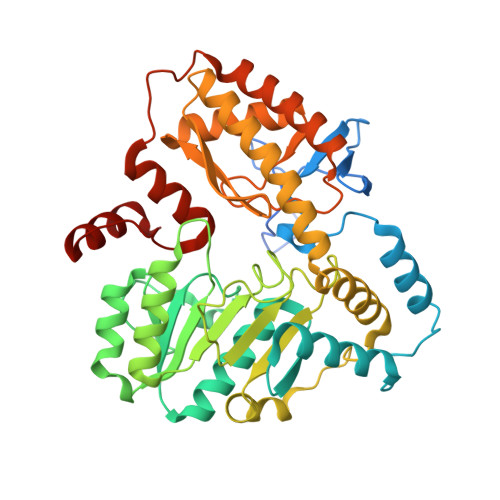Complete reconstitution of the diverse pathways of gentamicin B biosynthesis.
Ban, Y.H., Song, M.C., Hwang, J.Y., Shin, H.L., Kim, H.J., Hong, S.K., Lee, N.J., Park, J.W., Cha, S.S., Liu, H.W., Yoon, Y.J.(2019) Nat Chem Biol 15: 295-303
- PubMed: 30643280
- DOI: https://doi.org/10.1038/s41589-018-0203-4
- Primary Citation of Related Structures:
5Z83, 5Z8A, 5Z8K - PubMed Abstract:
Gentamicin B (GB), a valuable starting material for the preparation of the semisynthetic aminoglycoside antibiotic isepamicin, is produced in trace amounts by the wild-type Micromonospora echinospora. Though the biosynthetic pathway to GB has remained obscure for decades, we have now identified three hidden pathways to GB production via seven hitherto unknown intermediates in M. echinospora. The narrow substrate specificity of a key glycosyltransferase and the C6'-amination enzymes, in combination with the weak and unsynchronized gene expression of the 2'-deamination enzymes, limits GB production in M. echinospora. The crystal structure of the aminotransferase involved in C6'-amination explains its substrate specificity. Some of the new intermediates displayed similar premature termination codon readthrough activity but with reduced toxicity compared to the natural aminoglycoside G418. This work not only led to the discovery of unknown biosynthetic routes to GB, but also demonstrated the potential to mine new aminoglycosides from nature for drug discovery.
Organizational Affiliation:
Department of Chemistry and Nanoscience, Ewha Womans University, Seoul, Republic of Korea.


















